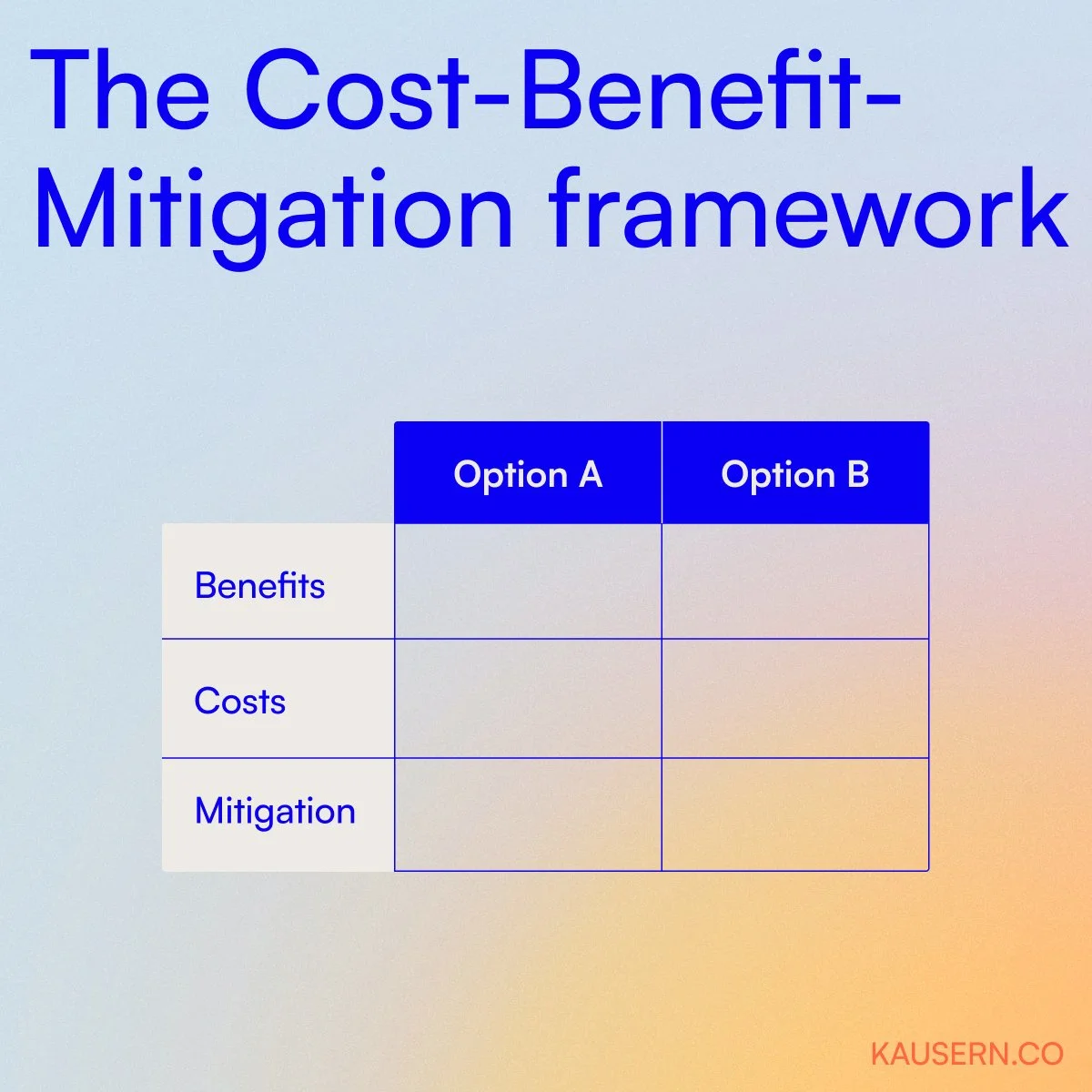The Cost-Benefit-Mitigation framework
Continuing with the theme of making sound decisions especially in high-stakes situations (see the Risk-Reward framework), I found this next framework suitable in a team setting.
The matrix, developed by Gil Shklarski is nicknamed “Xanax for decision making”, but I’ve simply named it the “Cost-Benefit-Mitigation framework”. This framework enables teams to keep moving fast by making calculated decisions when faced with decision-making gridlocks involving two (or more) options. It’s about improving team alignment while reducing stress in the decision-making process.
Here’s how it works. It starts with a basic chart, with the two (or more) options you’re deciding on. This chart might look like a generic pros/cons list, but the real magic is in the row labelled ‘Mitigations’ (image above).
Next, get the different teams who are working together on this project to come together and start populating the chart. This needs to be done collaboratively on a whiteboard or any of the online sharing documents.
The leader of this exercise plays the role of a Facilitator. Rather than asserting their own opinions, the facilitator encourages everyone to ideate.
Even though filling in the BENEFITS and COSTS rows for each option should be straightforward, it’s important for the leader to also push the team to think harder and really dig deep. Pose questions to the team like: ‘Will the boss be happy?’ ‘Will this energise or demotivate the teams involved?’ ‘Will we irritate our #2 top-spending client with this decision?’ ‘What will be the immediate impact?’ ‘What will be the long-term impact?’ etc.
Then you get to the exciting part: MITIGATIONS. This is where the Facilitator should be asking questions which soften or distribute the costs/risks associated with each option. Questions could include: ‘What is the underlying cause that is causing this risk, how can we mitigate it?’ ‘Is there a trade-off that we can make?’ ‘How bad can it really get if we don’t do anything about it?’ etc.
Mitigation conversations with the team (especially when it involves other departments) will draw out a wider range of perspectives and possible solutions because the options chosen could affect them. Sometimes you may end up adding more Options columns because new ideas emerge with different or fewer risks.
What I like about this matrix is that it allows everyone involved in the project to put their hopes and fears into the decision-making process and see them taken seriously as important factors. It also encourages the spirit of collaboration within the organisation.
Decision-making isn’t always about capturing the elusive “best” decision, because there is never just one. It’s about maximising the use of available information, gaining the confidence of all parties involved, and carrying it out with determination. ●

